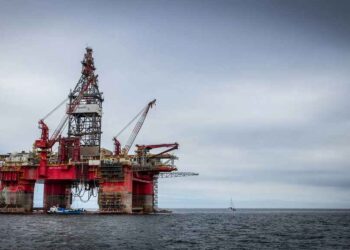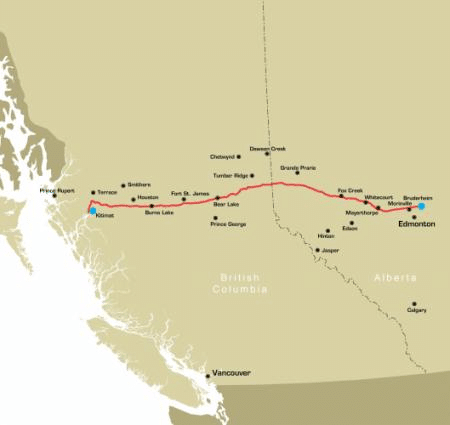NEW YORK (AP) — Dominion Resources, Duke Energy and other partners are proposing a $5 billion natural gas pipeline to connect the Southeast with the prodigious supplies of natural gas being produced in Pennsylvania, Ohio and West Virginia.
The 550-mile project, called the Atlantic Coast Pipeline, would begin in Harrison County, West Virginia and stretch through Virginia and North Carolina to Robeson County, near the South Carolina border. It’s designed to tap the rapidly growing supplies of gas produced in two geologic formations, known as the Marcellus and Utica shales, that are now accounting for more than a quarter of the nation’s natural gas. In the past, the Southeast has received nearly all of its gas from Louisiana, Texas and Oklahoma.
The pipeline is estimated to cost between $4.5 billion and $5 billion to build. Dominion Resources Inc. would own 45 percent of the project, Duke Energy Corp. would own 40 percent, Piedmont Natural Gas Co. would own 10 percent and AGL Resources Inc. would own 5 percent.
The pipeline could carry up to 1.5 billion cubic feet of natural gas per day. By comparison, the U.S. consumed 71 billion cubic feet of gas per day last year, according to the Energy Department. Yet Tom Farrell, Dominion’s CEO, said Tuesday that most of the gas is already spoken for, and he expects the rest to be snapped up later this year after the companies open up the remaining capacity for bidding.
Utilities prefer having diverse sources of fuel to reduce shortages and price spikes that can arise in times of high demand, such as hot summers or cold winters. And demand for natural gas for electric power generation, heating and manufacturing is expected to continue to rise. Clean air and clean water regulations — some already approved and some in the process of being finalized — are expected to make burning coal more difficult and expensive in the future.
In response, utilities are preparing for increased use of natural gas.
“We’ve retired half of our coal fleet for the last 5 years, and certainly that will continue,” said Duke Energy CEO Lynn Good in an interview Tuesday. “We see natural gas as an important part of the electricity generation mix for many decades to come.”
Burning natural gas emits almost none of the toxic chemicals and particulate matter that burning coal produces, and about half the carbon dioxide, which scientists say is responsible for climate change.
Natural gas does have its own environmental drawbacks, however. When methane leaks or is otherwise released directly into the atmosphere it heats the planet much faster than carbon dioxide. And the drilling technique that has led to increased U.S. supplies, called fracking, has raised concerns about water use, water contamination and other issues.
The Atlantic Coast pipeline is already sparking some protest along parts of its proposed route from landowners who worry that the pipeline could reduce property values, threaten water supplies and keep tourists away.
“It’s a dark day for the Shenandoah Valley and our part of the country,” said Nancy Sorrells, co-chair of the anti-pipeline group Augusta County Alliance of Tuesday’s announcement.
Virginia Gov. Terry McAuliffe said the proposed pipeline would be a boon for the state’s economy because of both the construction jobs to build the pipeline itself and the additional natural gas flow that will allow the state to recruit more heavy manufacturers.
“This is a game changer for manufacturing for us,” he said.


















































